 |
||
|
||
| ||
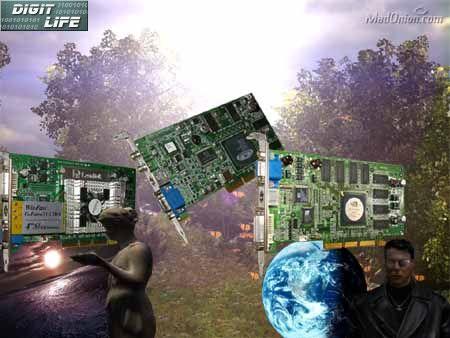 With the spring came the long-awaited 3DMark 2001. It came in handy for 3D enthusiasts, for NVIDIA with their new GeForce3 chip and for us - humble observers. So, lets' jump onto the new thrilling testing. Today we have the following ware:
Test stands
The tests were carried out at three resolutions – 800X600, 1024X768 and 1280X1024. Everywhere we had 32 bit color depth, 24 bitZ, 32 bit textures, texture compression was enabled, and the full screen anti-aliasing was off. We will specify the performance decrease (%) when switching the color depth (16-32 bits). In order to define in figures the impact of the hardware T&L on the overall performance of the GeForce3 we will give you the results received on the fastest processor of the review (Pentium 4 1.8 GHz) with the enabled T&L soft emulation. Note that vertex shader performance test was also carried on the GeForce2 Ultra and the Radeon in the soft emulation mode. General impression on the 3DMark 2001The test displays a gradually developed picture with the Direct3D in use what makes many cards switch the mode and the monitor blink once and then catch the scanning again. I'm sure that there is another method to realize the effect without the annoying blinking. On the picture you can see a logo of the corresponding processor type; though the mobile versiont of the Pentium II 366, installed in my notebook, was recognized as Celeron. The other processors available are known for the test. The interface of the program became more compact – one window with a familiar position of elements: 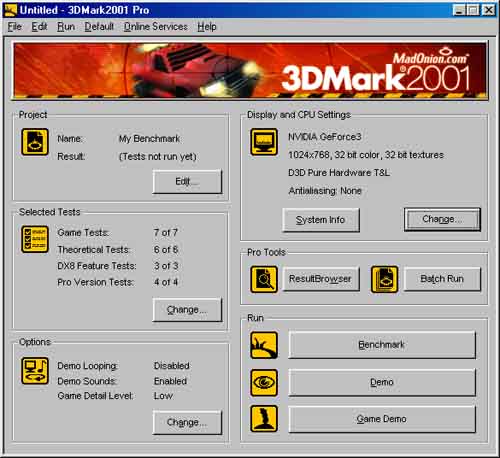 One of the major innovations is a presence of the gameable variant of one of the test games (Game 1 - Car Chase). The demo mode makes a great impression, but the demonstration is too short, some effects are weak, other are fleeting. Besides, apparently due to compatibility problems, it lacks for many scenes which are present in the tests. Moreover, I think they should have added some tests for possibilities of the new cards - for example, tesselation of smooth surfaces. Total resultThe worst drawback of the 3DMark2001 lies in its closeness – nobody knows what served a basis for the following formula: 3DMark score = (Game1LowDetail + Game2LowDetail + Game3LowDetail) * 10 + (Game1HighDetail + Game2HighDetail + Game3HighDetail + Game4) * 20 It makes difficult to draw the explanation, causes argues on favoring some cards. However that may be, we will not only give the results but also try to comment on them. 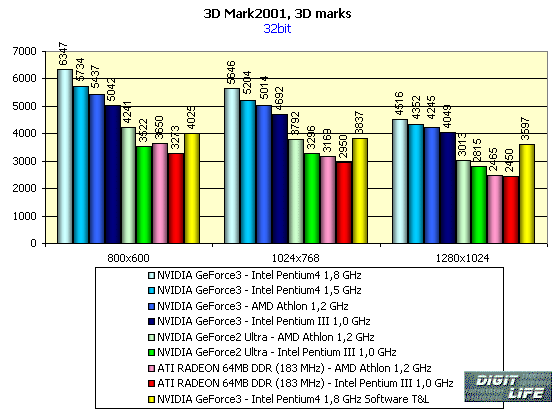 The GeForce3 is an unquestionable leader in this test. Even the significant difference in performance among the platforms doesn't allow other cards to catch the GeForce3 in unequal conditions (Pentium III 1 GHz + GeForce3 against Pentium 4 and Athlon). The T&L soft emulation worsens considerably the cards' results but it still allows it to remain a leader, except the lowest resolution. But you shouldn't thoughtlessly blame the test for being made up specially for this chip. Like the 3DMark 2000 was intended for DirectX 7.0. and all its possibilities, the new test was created having taken into consideration the DirectX 8 features, and it uses many new possibilities of this API. It's only the GeForce3 that has a full value support of the DirectX 8, that's why its high results mustn't surprise you. As soon as other DX8 cards appear (Radeon 2 and possibly a new creation from Matrox) the GeForce3 can get serious competitors in this test. We don't give the results obtained in the Pure Hardware T&L mode since due to some unknown reason they coincide with a usual Hardware T&L for the GeForce3, and on other cards this mode is not available. Even we we had switched it with the tweaker for the Radeon the test wouldn't show it among the possible variants. 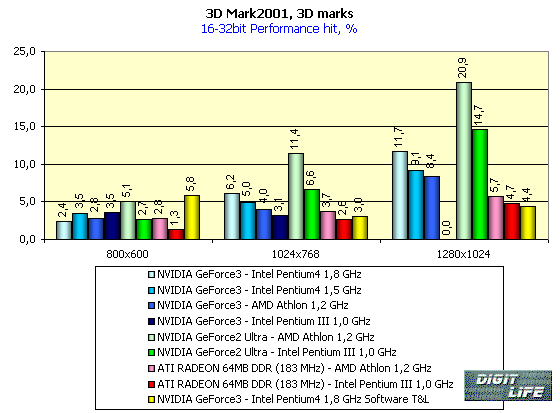 As you can see, performance decrease caused by switching 32 bit mode is minimal, and can trouble only owners of the GeForce2 Ultra in 1024X768 mode and higher. Results on the definite gamesThe test contains four main test scenes, or games. The first three have two detailing modes - low and high, the last one has only one. Now let's discuss the scenes and results in turn. Car ChaseThe test developers state that this scene spends the processor time for calculation of the physics and objects' actions quite truly, like any real game. It's an undoubted advantage - we can speak not only accelerator's speed but also estimate how it may show itself in future games on one or another platform. 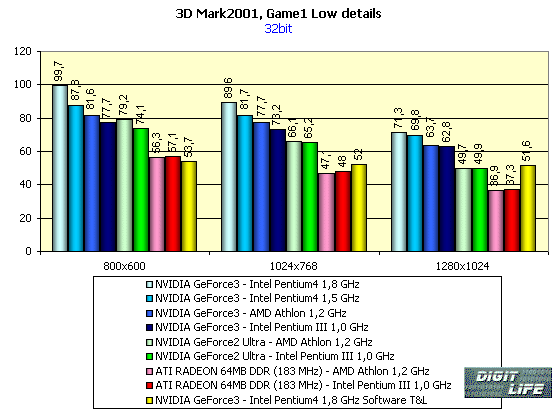 At low detailing level the picture corresponds to the total test result. The Ultra has showed its mighty team up with the Athlon. The Radeon has also scored good results, especially considering such a low chip frequency. You can paly this game on the GeForce3 at any resolutions, on the Ultra - up to 1024X768, on the Radeon only at 800X600. 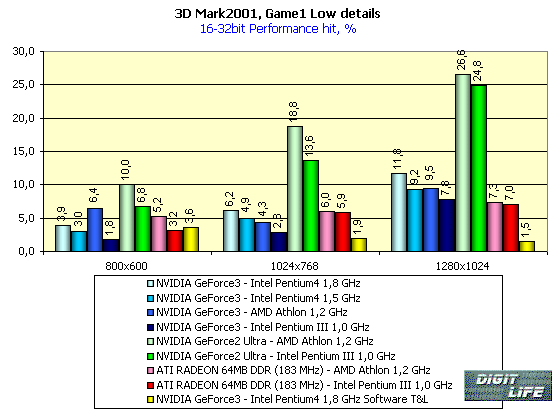 You can see the performance decrease once again when switching the 32 bit color mode - it can be troublesome only for the owners of the GeForce2 Ultra. 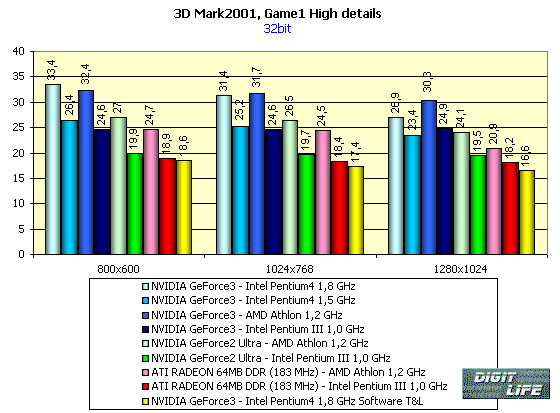 In this test not everything depends on the accelerator. The GeForce2 Ultra performed quite well together with the Athlon. On neither platform this game showed all its might – the frequency of the calculated frames is too low. DragothicHere the scenes have highoverdraw and rather weak optimization of the geometry on the output. So: 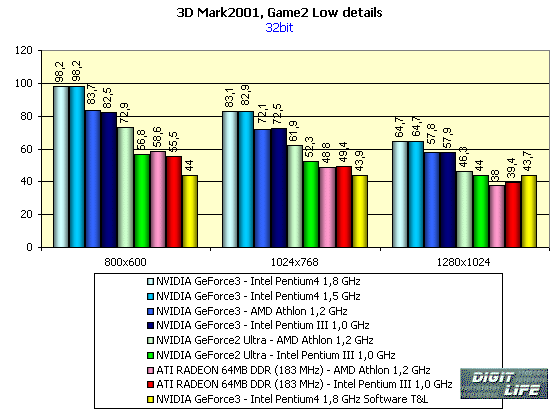 The whole load is put on the accelerator. The processor frequency doesn't have a great effect on the speed, it's only the FSB that influences (apparently, the geometrical data are transferred via the AGP, and are not kept in the local card's buffer). At max resolution the Radeon was helped by the HyperZ and HSR to approach the Ultra. 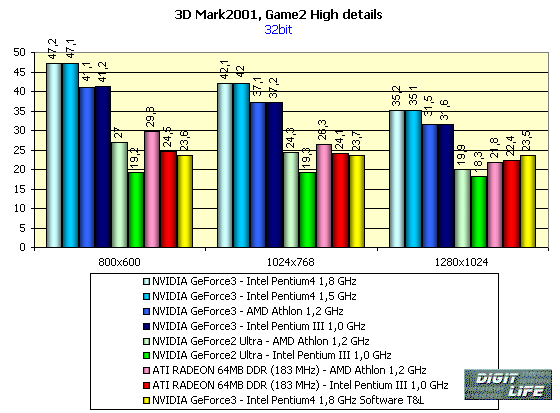 And here, due to the HSR and Z compression, the Radeon outruns the GeForce2 Ultra. The high detailing of this game adds new details and heroes and a load for the accelerator. But it's not so considerable as it was in the previous test, the game seems to be as dynamic as it was before. LobbyThe detailing level of the scenes corresponds to the Quake2. There we have a skinning (matrix blending) and a skeleton animation. There are a lot of detailed textures and tiny stuff what loads the accelerator greatly.  The results are high. The processor load is comparable to the accelerator load. Let's check what we have in high detailing level: 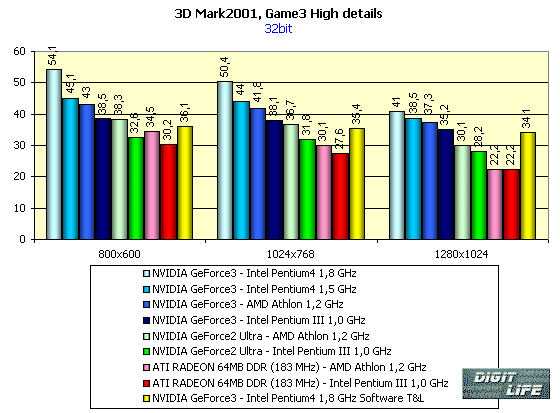 This game can be played at two resolutions only on the powerful processors and the GeForce3. The genre of such games requires changing platforms constantly. The Radeon leads equal struggle only at 800X600. NatureThe scenes are full of vegetation. Groups of plants are quite many and they look rather realistic: 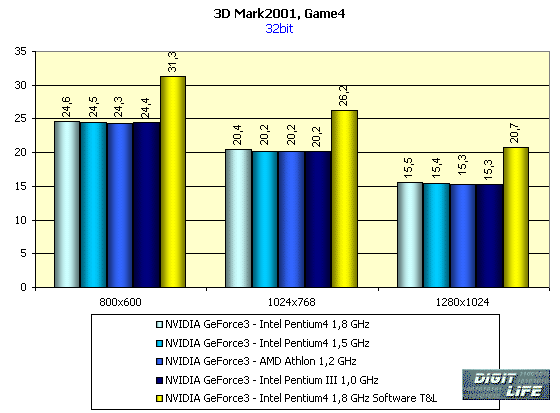 The test can be run only on the GeForce3 – it seems that they use vertex and pixel shaders. The usage of the former ones are proved by the performance jump in the T&L soft emulation mode, and presence of the latter are proved by impossibility to implement this test on the cards different from the GeForce3. I'm looking forward to seeing games with such landscape. Synthetical testsA new set of tests is drawn closer to the DX8' reality. Fillrate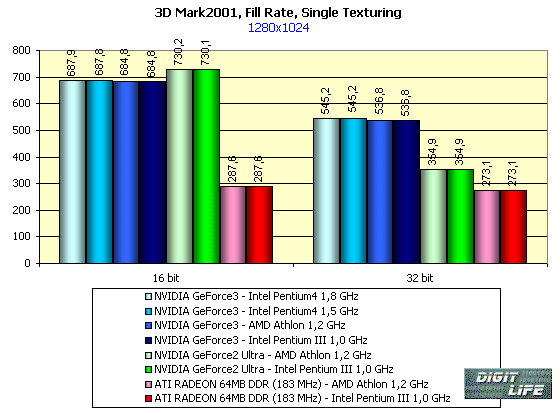 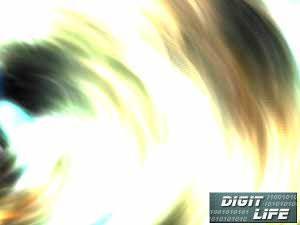 The shading speed depends not only the chip and doesn't differ much from the results received earlier with the 3DMark 2000. Note that theoretical limits for the cards in one-texture-per-pixel mode are 800, 1000 and 366 million pixels/s, correspondingly. The result of the Radeon doesn't depend much on the color depth, unlike in case of the GeForce2 Ultra. 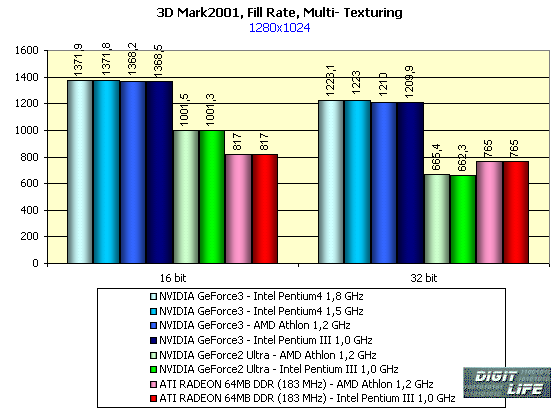 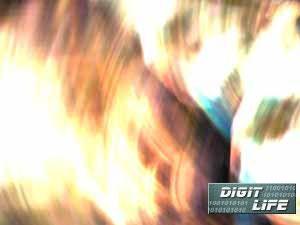 Now the test measures the fillrate not for two but for the maximum number of textures per pixel supported by this accelerator. I think that it's a true approach which take into consideration a possibility of the successive multitexturing (usage of one TMU for calculation of several textures at several clock cycles). You can make sure that calculation of 4 textures at 2 clock cycles is more advantageous (GeForce3) than two clock cycles with two textures (GeForce2 Ultra). Even the increased frequency didn't help this chip. And in 32 bit color the Ultra fell behind even the Radeon. Despite the low clock speed, the high efficiency in 32 bit color and a possibility to calculate 3 textures per clock helped it. High Polygon Count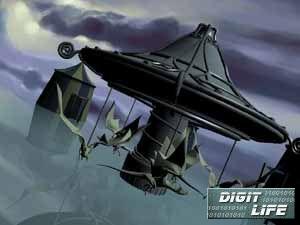 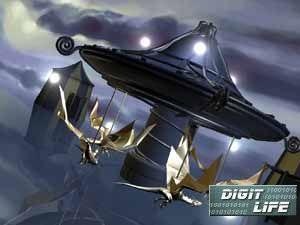 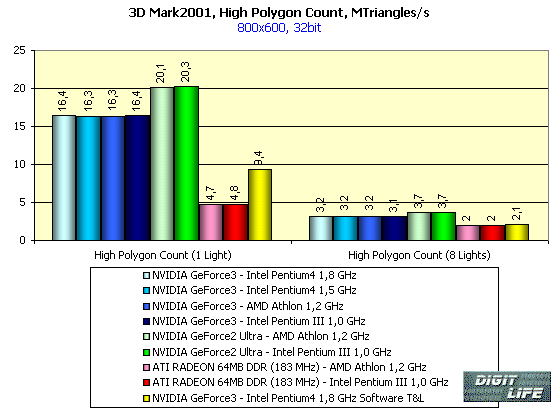 Here you can see that hardware T&L is much advantageous than the soft emulation even on the Pentium 4 1.8 GHz. The maximum total performance of the T&L in case of the Radeon is much lower (it can't reach even 6 million triangles per seconds), and a higher clock speed of the GeForce2 Ultra allows to outpace the GeForce3 even with the max number of light sources. Here, the results are well correlated with the received earlier ones, with usage of the modified examples of the DX8 SDK. Traditionally, the performance falls sharply with increase in the number of sources. The GeForce3 shows no improvement in its results. ReliefHere are two tests reflecting trends of the current and the nearest future - EMBM and DP3 relief texturing. Environment Mapped Bump Mapping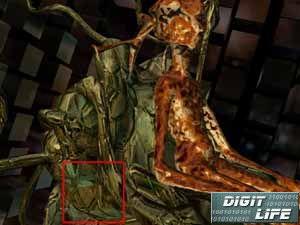 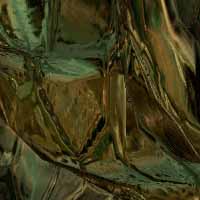  You might know that the GeForce2 series chips do not support the EMBM at all, and the scores of the other participants are quite adequate, including a little dependence on the processor connected with geometrical complexity of the scene (the number of polygons has an effect on the processor's load – in this scene the geometrical data are transferred via AGP). DOT3 Product Bump Mapping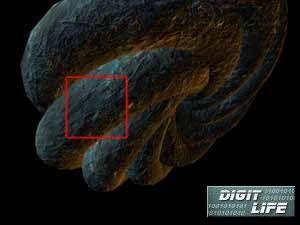   Here, in a more realistic but at the same time more complex (as for preparation of source data) DotProduct method the GeForce3 wins not only at the expense of advantage over the GeForce2 Ultra in 32 bit color mode but also at the expense of usage of shaders (in my opinion) for generation of parameters which are necessary for correct usage of the DP3 BM. Now we are turning to several tests intended for new possibilities of the DX8. Vertex Shader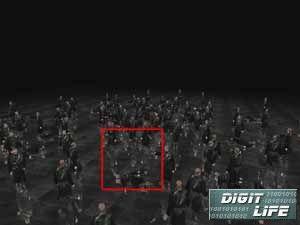 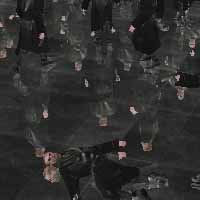 In this test a great deal of small heroes from Lobby are running on the flat plane. The vertex shaders are probably used for calculation of skeleton animation of models and/or skinning. 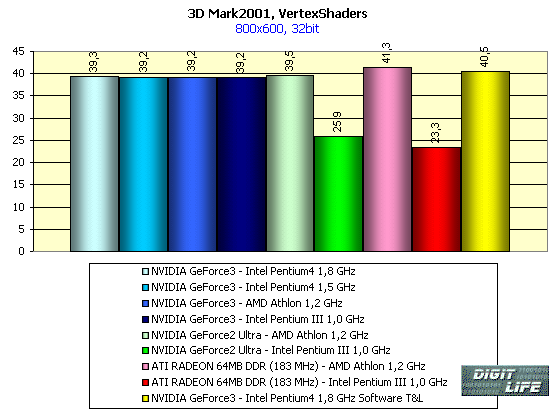 Here we can see again practically equivalent performance of the hardware implementation of shaders and soft emulation. Note that only the GeForce3 (four columns on the left) implements shaders hardwarely. The Pentium III is not enough, and the Athlon and the Pentium 4 stations managed to provide the accelerators with the comparable number of vertices. The results are so close that it seems that the test is limited by some factor, for example, by AGP bandwidth. Pixel ShaderThe most beautiful test (flight over the night ocean) shows possibilities of pixel shaders. Surprisingly, the Pentium 4 falls behind the Athlon and the Pentium III! Apparently due to some peculiar features of drivers' optimization for this platform. Point SpritesAnd the last comes a splendid voxel statue of a horse (set by a large number of pixels with 3D coordinates). For its displaying the PointSprites is used. The Radeon, unfortunately, doesn't support them correctly, and the GeForce3 overran the GeForce2 Ultra by a great margin, where they are apparently displayed with two usual triangles. Screenshot gallery and quality issuesIn this section you will see the screenshots got on the game-tests in the High Quality mode. Car Chase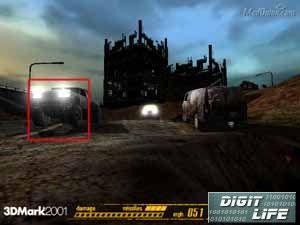 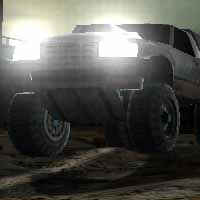 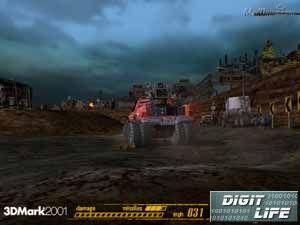 As we have noticed earlier it is an example of a real game of the future generation with an accurate calculation of physical processes. Note a detailed drawing of the cars. The scenes are very complex, with the following characteristics: Low detail:
High detail:
High mode - detailing differs from Low in the following:
Dragothic  The game has quite a high Overdraw factor connected with displaying of a great deal of houses which partly cover one another (remember the VillageMark test). 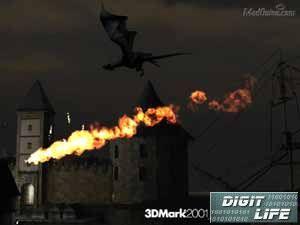 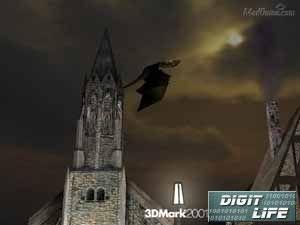 This game, as any other of this genre, has a lot of effects connected both with lighting and with realistic moving of heroes, especially mythical ones. 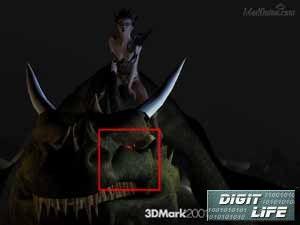 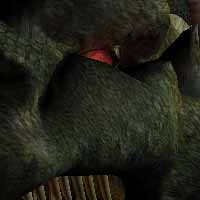 Note a proper drawing of the dragon's muzzle. The scenes are also quite complex, but the total texture size is much smaller than in the previous case. Low detail:
High detail:
High mode - detailing differs from Low in the following:
Lobby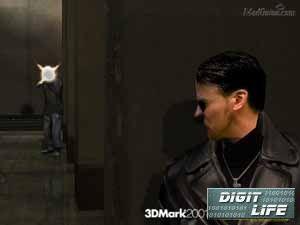 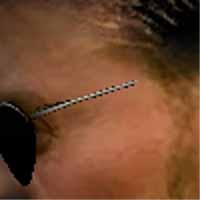 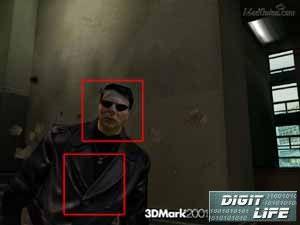  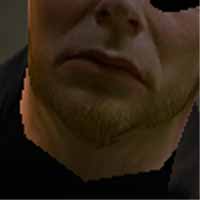  Note a proper drawing of the main hero's face. An excellent quality but for the fact that the ear arm is not finished. But it seems that apart from the face and dress the developers had no time for other things: 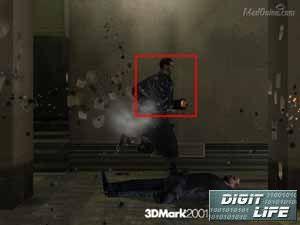  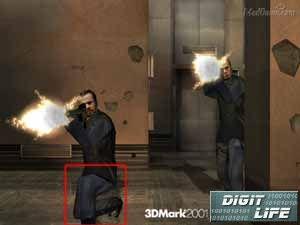 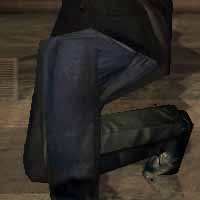 Look at the arms and sleeves of the hero, at the knees of the shooting man... I wish they spent more polygons for these details. The scenes are comparably easier, the total texture size is also less than in the previous cases. Low detail:
High detail:
High detail mode differs from Low in the following:
Nature  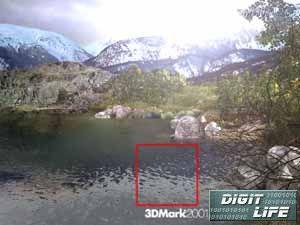 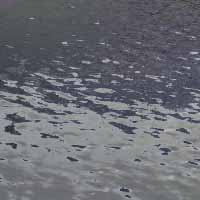 The most beautiful game test. The main distinguishing feature is that it uses pixel shaders (plus vertex shaders and cube texturing) for forming water surfaces (except the fast going river). That's why you can watch this game only on the GeForce3. 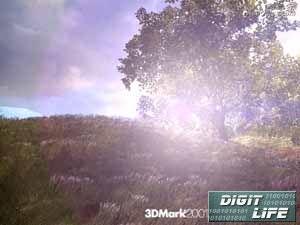 Certainly, not every leaf is a separate object, they use some arrays of leaves and grass drawn on one texture. But there is quite a number of these arrays, each moving its own way in full correspondance with physical processes. The lighting effects are also thrilling! For all these things they used vertex shaders. As you can see this test uses DirectX 8.0 as full as possible. The scenes are quite complex, the total texture size is quite big. High detail:
ConclusionThe test was passed quite well. Even though many expected much more. We are looking forward to seeing an open source test for the Direct3D and OpenGL which would allow not only to examine all extreme and overall characteristics of the boards but also to make sure that its test scenes measure exactly those things what they should do. And this test is coming... Write a comment below. No registration needed!
|
Platform · Video · Multimedia · Mobile · Other || About us & Privacy policy · Twitter · Facebook Copyright © Byrds Research & Publishing, Ltd., 1997–2011. All rights reserved. |